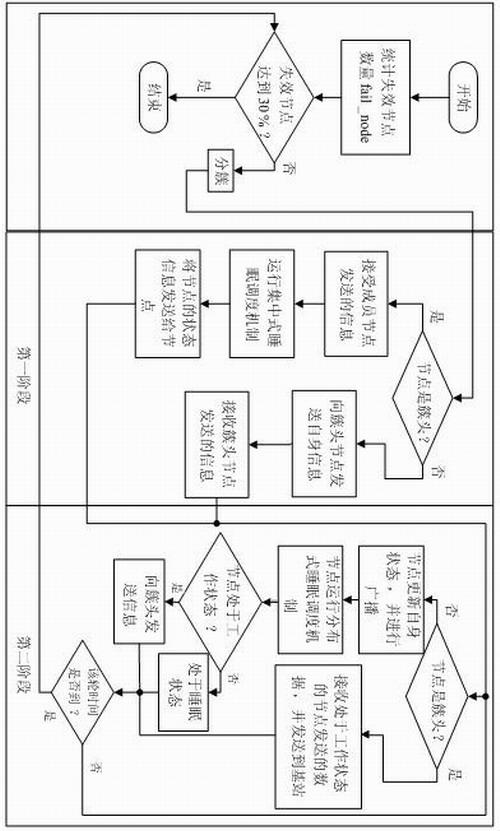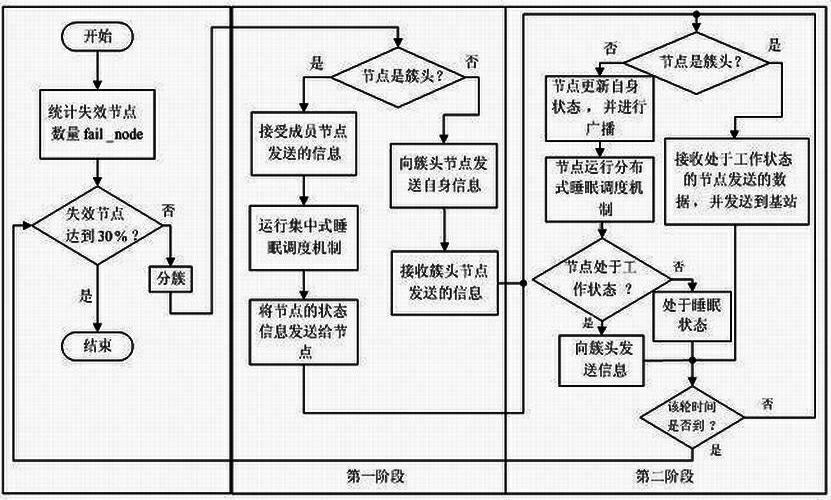Two-stage node scheduling method for wireless sensor network
A technology of wireless sensors and scheduling methods, applied in wireless communication, advanced technology, electrical components, etc., can solve the problems of running out of node energy, not considering the size of redundant coverage area, and uneven energy consumption of nodes, so as to prolong the life cycle. , the effect of optimizing network resources and reducing network energy consumption
- Summary
- Abstract
- Description
- Claims
- Application Information
AI Technical Summary
Problems solved by technology
Method used
Image
Examples
Embodiment Construction
[0011] The wireless sensor network two-stage node scheduling method of the present invention combines a centralized node scheduling mechanism and a distributed node scheduling mechanism, and performs two-stage node scheduling in each cluster after clustering is completed. Such as figure 1 As shown, the method includes the following steps:
[0012] Step 1: Divide the network into clusters, and elect cluster head nodes, and non-cluster head nodes select cluster heads;
[0013] Step 2: Carry out the first stage of node scheduling: on the basis of the completion of clustering, the member nodes in each cluster send their own information to the cluster head node, and the cluster head node runs the centralized node scheduling mechanism according to the received member node information, Perform unified scheduling on the member nodes in the cluster; send the scheduled node status information to each member node, and the member nodes update their own status after receiving the informat...
PUM
 Login to View More
Login to View More Abstract
Description
Claims
Application Information
 Login to View More
Login to View More - R&D
- Intellectual Property
- Life Sciences
- Materials
- Tech Scout
- Unparalleled Data Quality
- Higher Quality Content
- 60% Fewer Hallucinations
Browse by: Latest US Patents, China's latest patents, Technical Efficacy Thesaurus, Application Domain, Technology Topic, Popular Technical Reports.
© 2025 PatSnap. All rights reserved.Legal|Privacy policy|Modern Slavery Act Transparency Statement|Sitemap|About US| Contact US: help@patsnap.com



